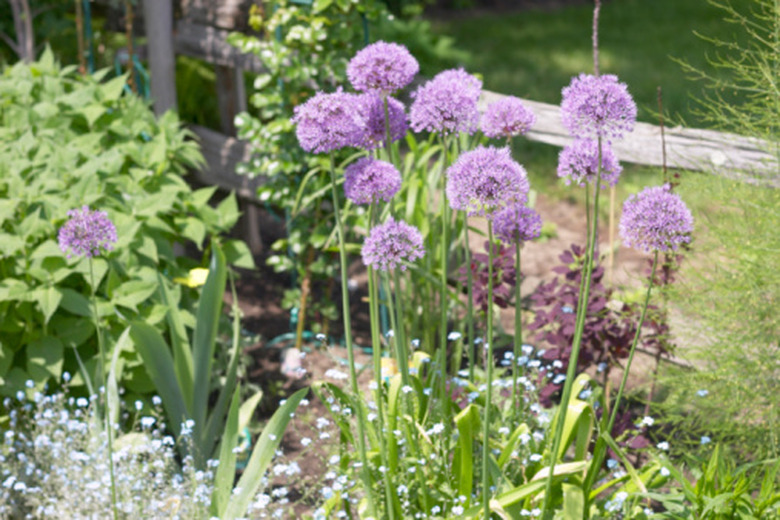Can You Plant A Garden Right After Putting Down Preen?
Whether planting a flower or vegetable garden, unwanted weed growth is a frustrating problem. This is especially true if you have to remove the growth by hand. Fortunately, gardeners can use Preen to control weed growth and germination. Preen is a weed-preventing product containing trifluralin. It controls unwanted growth for approximately three months. Planting after an application of Preen is safe, depending on what you are planting.
Flower Gardens
Flower Gardens
Preen is safe to use in flower gardens once plants are established. Label instructions suggest using the product after ornamental flowers, grasses and shrubs are at least 3 inches in height. Flower seeds sown into the garden after an application of Preen will not germinate. If using the product in flower gardens, remove the weeds by hand before sowing seeds. Plant the flower seeds as specified on the package and wait until they reach at least 3 inches tall. Once the seedlings have obtained the correct height, applying Preen will not injure them.
Before Planting Vegetables
Before Planting Vegetables
Preen is safe to apply to the garden's soil before sowing some vegetables and transplants. Gardeners will need to remove all the existing weeds in the garden before applying the product. Apply Preen to the soil before seeding or transplanting vegetables such as broccoli, celery and greens such as collards, mustard or turnips. Apply the product before sowing vegetable seeds and transplants such as peas, beans, tomatoes, peppers, eggplants, radish and onions. When dealing with perennial vegetables such as asparagus, apply Preen before the spears emerge from the soil.
After Planting Vegetables
After Planting Vegetables
Preen can injure some vegetable seeds or seedlings if applied before planting. As with flower seedlings, apply the product after the vegetable seedlings develop at least five leaves. It is best to wait to apply Preen when planting melon-type vegetables such as cucumbers, watermelons and cantaloupes. Gardeners can apply Preen to potato plants after planting and before growth emerges from the ground. Use caution not to allow the product to touch the foliage or to damage the seedlings when applying.
Using With Mulch
Using With Mulch
After removing weeds from flower or vegetable gardens and applying mulch, an application of Preen stops new weed growth from developing. Follow label instructions on application rates. Sprinkle the product over the top surface of the mulch. Keep the granules from bunching against plants or touching the foliage. Water the product into the mulch, once applied. Spray plants to wash away any granules touching the foliage.
Applying Preen
Applying Preen
Do not apply Preen to moist foliage. It is also best to apply when the weather is not windy to keep it in place. Before applying Preen, remove existing weeds from the garden, as it does not kill weeds but prevents them from germinating. Rake the soil level and sprinkle the product over the soil's surface. Carefully rake it into the top 1 to 2 inches of soil and water it into the area. Apply 1 lb. for every 640 square feet of clay soils. For loamy soils, apply 1 lb. for every 960 square feet. Use 1 lb. for every 1,280 square feet of sandy soils.
